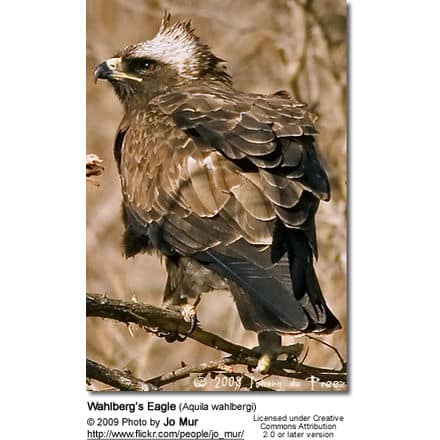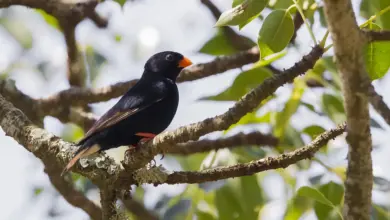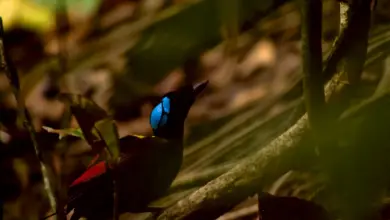Wahlberg’s Eagles
The Wahlberg’s Eagles (Aquila wahlbergi) is a bird of prey. Like all eagles, it belongs to the family Accipitridae.
This bird is named after the Swedish naturalist Johan August Wahlberg.
Distribution / Range
Wahlberg’s Eagle breeds in most of Africa south of the Sahara. It is a bird of woodland, often near water.

Description
Wahlberg’s Eagle is a medium-sized raptor. It is about 55-60 cm in length and has a wingspan of 130-160 cm. Body mass is 1.04kg (2lb 05oz) for males and 1.3kg (2lb 14oz) for females on average.
The plumage is dark brown except for dark streaked grey undersides to the flight feathers, and a barred grey undertail. The head has a small crest, and the legs are yellow.
There is a pale variant which is much lighter brown with whitish, rather than grey undertail and flight feather undersides.
Males and females look alike.
In flight, this species is very cross-shaped, with long evenly wide wings, a slim body, and a long narrow square-ended tail. The wings are held very flat.
Eagles … Birds of Prey … The Sport of Falconry
Identification
The large brown eagles are generally a tricky group to identify, but distinctive features of Wahlberg’s Eagle include: round nostrils which separate it from Tawny and Steppe Eagles, although the two Spotted Eagles also have round nostrils; some form of a crest is usually visible; the gape only extends at maximum to the middle of the eye, whereas in Lesser Spotted Eagle, it extends to the back of the eye.
There are both light and dark phases of this species.
Nesting / Breeding
It builds a stick nest in the fork of a tree or the crown of a palm tree. The clutch is one or two eggs.
Diet / Feeding
Wahlberg’s Eagle hunts reptiles, small mammals, and birds.
Calls / Vocalizations
The call is a whistled kleeah-kleeah-kleeah.
References
- BirdLife International (2004). Aquila wahlbergi. 2006. IUCN Red List of Threatened Species. IUCN 2006. Retrieved on 12 May 2006. Database entry includes justification for why this species is of least concern
- Birds of The Gambia by Barlow, Wacher and Disley, ISBN 1-873403-32-1




